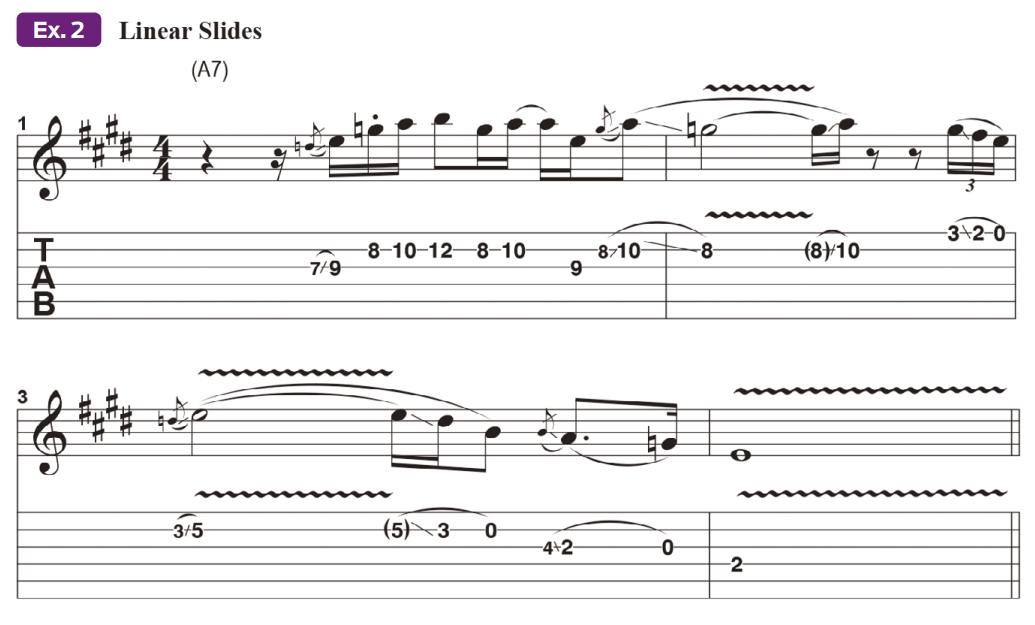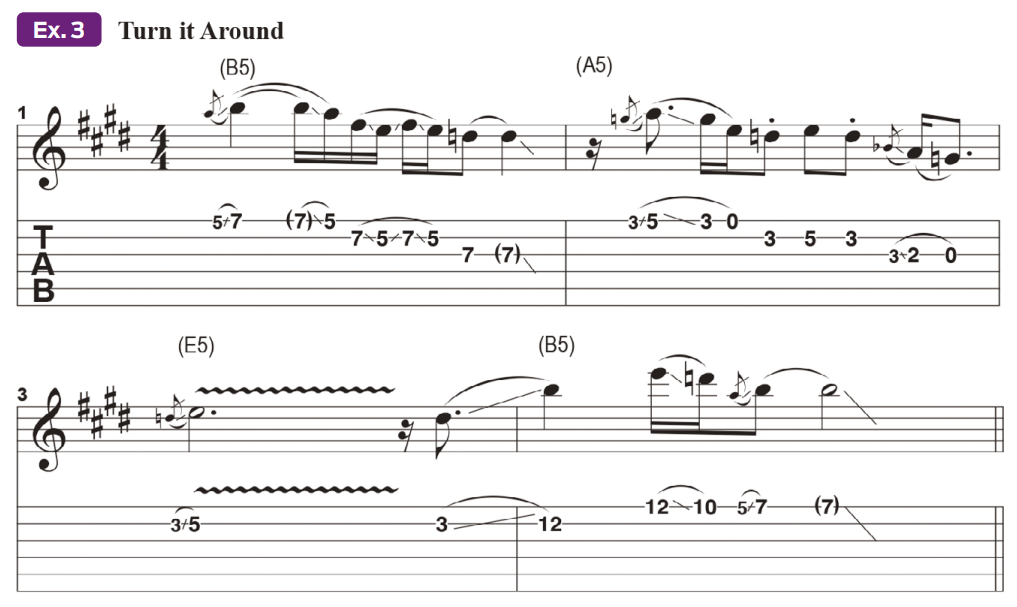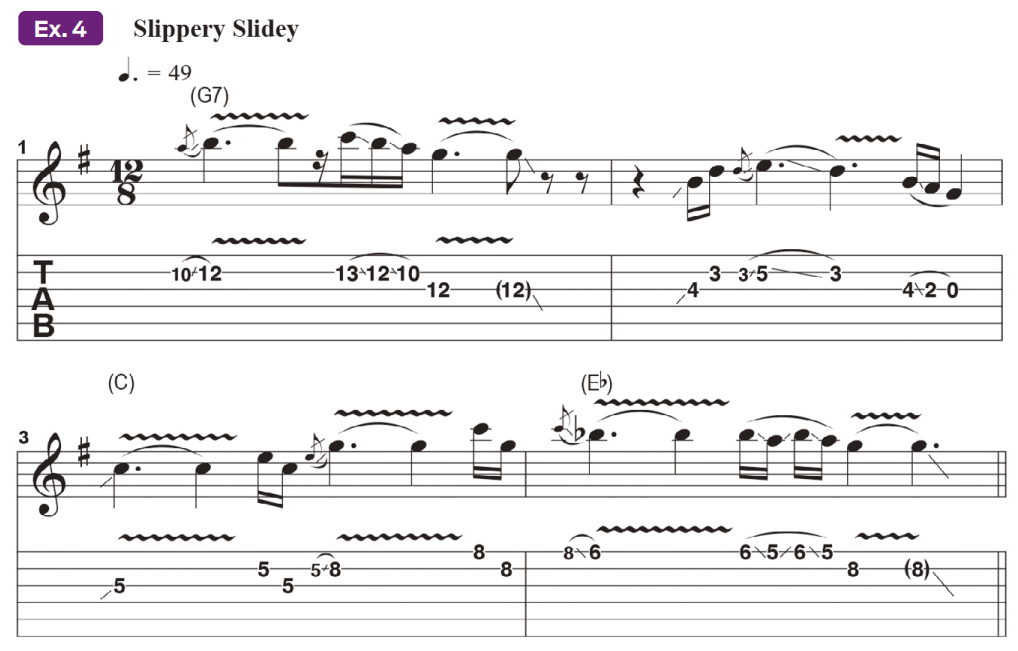How to Play Slide Guitar Like Derek Trucks
These five useful techniques will help you become a bottleneck virtuoso

Derek Trucks is celebrated for his soulful, innovative slide guitar playing, which is characterized by his unique touch, highly refined tone and adventurous note choices.
The guitarist plugs straight into a cranked Fender-style tube amp for natural, organic-sounding gain, but an overdrive pedal can provide similar tones at more reasonable volume levels.
Most often, he uses the bridge pickup on his Gibson SG, softening the sound slightly by rolling back its tone control a little.
Derek is also a fingerstyle player, which lightens the attack of his tone further.

In this lesson, we’ll look at some of the elements of his signature slide playing approaches.
Like many slide players, Derek prefers open tunings (usually open E: low to high, E, B, E, G#, B, E), but the examples in this lesson are presented in standard tuning, for your convenience.
When playing slide, the most important thing is to achieve good intonation (pitch centering). This is done by positioning the slide directly over the fret, not behind it.
All the latest guitar news, interviews, lessons, reviews, deals and more, direct to your inbox!
When playing slide, the most important thing is to achieve good intonation
Another critical aspect of slide technique is suppressing unwanted notes. This is best done by wearing the slide on either your 2nd, 3rd (best choice) or 4th finger and lightly resting your 1st finger and any others that are behind the slide on the strings, to dampen unwanted sympathetic vibrations.
Use a light touch with both hands and be careful not to “clang” the slide against the frets.
Also, the fingers and palm of the pick hand may be used to mute unplayed strings.
Ex. 1 KEEP TRUCKIN’ ON

The first half of this phrase toggles between targeted chord tones at the 12th fret (E and B) and other E minor pentatonic scale tones at the 10th fret.
In bar 3, we do something similar one octave lower, on the D and G strings at the 9th and 7th frets.
Work on cultivating the vibratos in this example and in the remaining ones, striving for a wide, even shake.
Wiggle the slide the distance of one fret both below and above the target note, in a smooth, even oscillation.
Ex. 2 LINEAR SLIDES

The opening phrase of this example gets to the core of what makes Derek such a great slide player: His ability to seamlessly and accurately shift between notes up and down a single string using linear slides.
Playing this way makes you rely more on your ear and less on familiar visual scale shapes.
Here we’re exploring the A Mixolydian mode (A, B, C # , D, E, F # , G).
Ex. 3 TURN IT AROUND

This example is a stock V - IV - I blues turnaround lick in the key of E (B - A - E).
Remember to use a light touch, and keep the tip of your thumb anchored to the back of the neck roughly opposite your slide as you play, for added stability and control as you repeatedly shift the slide.
The open-string notes in bar 2 follow slide phrases, so you’ll need to slightly “flick” your slide off the string, slightly downward, much like a pull-off.
Ex. 4 SLIPPERY SLIDEY

We change to a slow 12 8 (triplet) blues feel here, in the key of G.
The first phrase is deceptively challenging. You’ll need to accurately nail the 13th-fret C note then quickly move the slide down to the 12th and 10th frets, pausing very briefly to sound the B and A notes.
The old adage of practicing slowly at first is particularly relevant here.
Ex. 5 GRACE-NOTE SLIDES

Our final example, also played with a triplet feel and in the key of G, shows how to tastefully emulate Derek’s signature use of quick grace-note melodic embellishments.
Sometimes he will briefly and intentionally press the slide down onto the fretboard, instead of letting it “float” along the strings.
We highly recommend that you experiment with this technique to cop Derek’s unique touch.
Browse the Tedeschi Trucks Band catalog here.
Guitar Player is the world’s most comprehensive, trusted and insightful guitar publication for passionate guitarists and active musicians of all ages. Guitar Player magazine is published 13 times a year in print and digital formats. The magazine was established in 1967 and is the world's oldest guitar magazine. When "Guitar Player Staff" is credited as the author, it's usually because more than one author on the team has created the story.
